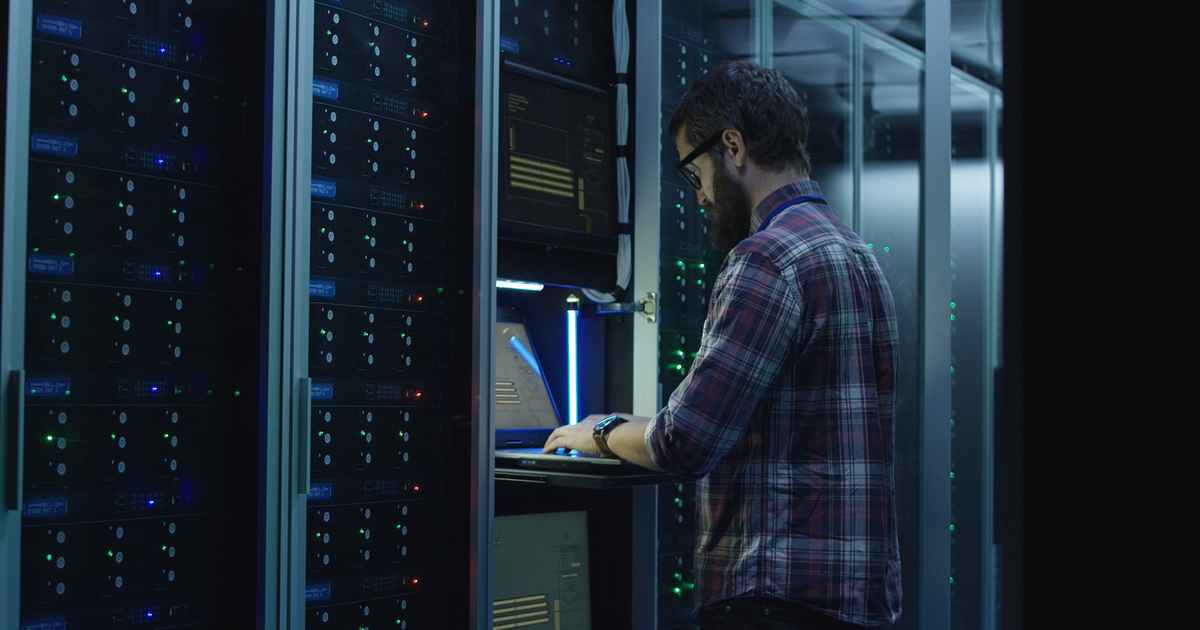
Hyper-Converged Infrastructure
GlobeNewswire | October 19, 2023
Alluxio, the data platform company for all data-driven workloads, today introduced Alluxio Enterprise AI, a new high-performance data platform designed to meet the rising demands of Artificial Intelligence (AI) and machine learning (ML) workloads on an enterprise’s data infrastructure. Alluxio Enterprise AI brings together performance, data accessibility, scalability and cost-efficiency to enterprise AI and analytics infrastructure to fuel next-generation data-intensive applications like generative AI, computer vision, natural language processing, large language models and high-performance data analytics.
To stay competitive and achieve stronger business outcomes, enterprises are in a race to modernize their data and AI infrastructure. On this journey, they find that legacy data infrastructure cannot keep pace with next-generation data-intensive AI workloads. Challenges around low performance, data accessibility, GPU scarcity, complex data engineering, and underutilized resources frequently hinder enterprises' ability to extract value from their AI initiatives. According to Gartner®, “the value of operationalized AI lies in the ability to rapidly develop, deploy, adapt and maintain AI across different environments in the enterprise. Given the engineering complexity and the demand for faster time to market, it is critical to develop less rigid AI engineering pipelines or build AI models that can self-adapt in production.” “By 2026, enterprises that have adopted AI engineering practices to build and manage adaptive AI systems will outperform their peers in the operationalizing AI models by at least 25%.”
Alluxio empowers the world’s leading organizations with the most modern Data & AI platforms, and today we take another significant leap forward, said Haoyuan Li, Founder and CEO, Alluxio. Alluxio Enterprise AI provides customers with streamlined solutions for AI and more by enabling enterprises to accelerate AI workloads and maximize value from their data. The leaders of tomorrow will know how to harness transformative AI and become increasingly data-driven with the newest technology for building and maintaining AI infrastructure for performance, seamless access and ease of management.
With this announcement, Alluxio expands from a one-product portfolio to two product offerings - Alluxio Enterprise AI and Alluxio Enterprise Data - catering to the diverse needs of analytics and AI. Alluxio Enterprise AI is a new product that builds on the years of distributed systems experience accumulated from the previous Alluxio Enterprise Editions, combined with a new architecture that is optimized for AI/ML workloads. Alluxio Enterprise Data is the next-gen version of Alluxio Enterprise Edition, and will continue to be the ideal choice for businesses focused primarily on analytic workloads.
Accelerating End-to-End Machine Learning Pipeline
Alluxio Enterprise AI enables enterprise AI infrastructure to be performant, seamless, scalable and cost-effective on existing data lakes. Alluxio Enterprise AI helps data and AI leaders and practitioners achieve four key objectives in their AI initiatives: high-performance model training and deployment to yield quick business results; seamless data access for workloads across regions and clouds; infinite scale that has been battle-tested at internet giant’s scale; and maximized return on investments by working with existing tech stack instead of costly specialized storage. With Alluxio Enterprise AI, enterprises can expect up to 20x faster training speed compared to commodity storage, up to 10x accelerated model serving, over 90% GPU utilization, and up to 90% lower costs for AI infrastructure.
Alluxio Enterprise AI has a distributed system architecture with decentralized metadata to eliminate bottlenecks when accessing massive numbers of small files, typical of AI workloads. This provides unlimited scalability beyond legacy architectures, regardless of file size or quantity. The distributed cache is tailored to AI workload I/O patterns, unlike traditional analytics. Finally, it supports analytics and full machine learning pipelines - from ingestion to ETL, pre-processing, training and serving.
Alluxio Enterprise AI includes the following key features:
Epic Performance for Model Training and Model Serving - Alluxio Enterprise AI offers significant performance improvements to model training and serving on an enterprise’s existing data lakes. The enhanced set of APIs for model training can deliver up to 20x performance over commodity storage. For model serving, Alluxio provides extreme concurrency and up to 10x acceleration for serving models from offline training clusters for online inference.
Intelligent Distributed Caching Tailored to I/O Patterns of AI Workloads - Alluxio Enterprise AI’s distributed caching feature enables AI engines to read and write data through the high performance Alluxio cache instead of slow data lake storage. Alluxio’s intelligent caching strategies are tailored to the I/O patterns of AI engines – large file sequential access, large file random access, and massive small file access. This optimization delivers high throughput and low latency for data-hungry GPUs. Training clusters are continuously fed data from the high-performance distributed cache, achieving over 90% GPU utilization.
Seamless Data Access for AI Workloads Across On-prem and Cloud Environments - Alluxio Enterprise AI provides a single pane of glass for enterprises to manage AI workloads across diverse infrastructure environments easily. Providing a source of truth of data for the machine learning pipeline, the product fundamentally removes the bottleneck of data lake silos in large enterprises. Sharing data between different business units and geographical locations becomes seamless with a standard data access layer via the Alluxio Enterprise AI platform.
New Distributed System Architecture, Battle-tested At Scale - Alluxio Enterprise AI builds on a new innovative decentralized architecture, DORA (Decentralized Object Repository Architecture). This architecture sets the foundation to provide infinite scale for AI workloads. It allows an AI platform to handle up to 100 billion objects with commodity storage like Amazon S3. Leveraging Alluxio’s proven expertise in distributed systems, this new architecture has addressed the ever-increasing challenges of system scalability, metadata management, high availability, and performance.
“Performance, cost optimization and GPU utilization are critical for optimizing next-generation workloads as organizations seek to scale AI throughout their businesses,” said Mike Leone, Analyst, Enterprise Strategy Group. “Alluxio has a compelling offering that can truly help data and AI teams achieve higher performance, seamless data access, and ease of management for model training and model serving.”
“We've collaborated closely with Alluxio and consider their platform essential to our data infrastructure,” said Rob Collins, Analytics Cloud Engineering Director, Aunalytics. “Aunalytics is enthusiastic about Alluxio's new distributed system for Enterprise AI, recognizing its immense potential in the ever-evolving AI industry.”
“Our in-house-trained large language model powers our Q&A application and recommendation engines, greatly enhancing user experience and engagement,” said Mengyu Hu, Software Engineer in the data platform team, Zhihu. “In our AI infrastructure, Alluxio is at the core and center. Using Alluxio as the data access layer, we’ve significantly enhanced model training performance by 3x and deployment by 10x with GPU utilization doubled. We are excited about Alluxio’s Enterprise AI and its new DORA architecture supporting access to massive small files. This offering gives us confidence in supporting AI applications facing the upcoming artificial intelligence wave.”
Deploying Alluxio in Machine Learning Pipelines
According to Gartner, data accessibility and data volume/complexity is one the top three barriers to the implementation of AI techniques within an organization. Alluxio Enterprise AI can be added to the existing AI infrastructure consisting of AI compute engines and data lake storage. Sitting in the middle of compute and storage, Alluxio can work across model training and model serving in the machine learning pipeline to achieve optimal speed and cost. For example, using PyTorch as the engine for training and serving, and Amazon S3 as the existing data lake:
Model Training: When a user is training models, the PyTorch data loader loads datasets from a virtual local path /mnt/alluxio_fuse/training_datasets. Instead of loading directly from S3, the data loader will load from the Alluxio cache instead. During training, the cached datasets will be used in multiple epochs, so the entire training speed is no longer bottlenecked by retrieving from S3. In this way, Alluxio speeds up training by shortening data loading and eliminates GPU idle time, increasing GPU utilization. After the models are trained, PyTorch writes the model files to S3 through Alluxio.
Model Serving: The latest trained models need to be deployed to the inference cluster. Multiple TorchServe instances read the model files concurrently from S3. Alluxio caches these latest model files from S3 and serves them to inference clusters with low latency. As a result, downstream AI applications can start inferencing using the most up-to-date models as soon as they are available.
Platform Integration with Existing Systems
To integrate Alluxio with the existing platform, users can deploy an Alluxio cluster between compute engines and storage systems. On the compute engine side, Alluxio integrates seamlessly with popular machine learning frameworks like PyTorch, Apache Spark, TensorFlow and Ray. Enterprises can integrate Alluxio with these compute frameworks via REST API, POSIX API or S3 API.
On the storage side, Alluxio connects with all types of filesystems or object storage in any location, whether on-premises, in the cloud, or both. Supported storage systems include Amazon S3, Google GCS, Azure Blob Storage, MinIO, Ceph, HDFS, and more.
Alluxio works on both on-premise and cloud, either bare-metal or containerized environments. Supported cloud platforms include AWS, GCP and Azure Cloud.
Read More

Data Storage
Cision Canada | October 17, 2023
AMI, the leader in foundational technology for sustainable, scalable, and secure global computing, is set to drive the future of Intel Data Center Manager (DCM) as it takes over the development, sales, and support of DCM under an agreement with Intel. This strategic transition empowers AMI to lead further the innovation and expansion of the Intel DCM product.
With a unique position in the industry, AMI plays a pivotal role in enabling the cloud and data center ecosystem for all compute platforms. Intel DCM empowers data centers with the capability to manage and fine-tune server performance, energy consumption, and cooling efficiency. This operational optimization reduces the total cost of ownership, improves sustainability, and elevates performance benchmarks.
We thank Intel for trusting AMI to lead Intel DCM into the future. This solution for efficient data center management will play a crucial role in enhancing the operational eco-efficiency of the data centers. It empowers data center managers with real-time insights into energy usage, thermal status, device health, and asset management, says Sanjoy Maity, CEO at AMI. AMI remains steadfast in aiding data center operators in achieving their manageability and sustainability objectives.
About AMI
AMI is Firmware Reimagined for modern computing. As a global leader in Dynamic Firmware for security, orchestration, and manageability solutions, AMI enables the world's compute platforms from on-premises to the cloud to the edge. AMI's industry-leading foundational technology and unwavering customer support have generated lasting partnerships and spurred innovation for some of the most prominent brands in the high-tech industry. For more information, visit ami.com.
Read More

Data Storage
PRWeb | October 12, 2023
CoolIT Systems, a global leader in advanced cooling technology, and Switch Datacenters, a leading sustainable data center operator and developer, are thrilled to unveil a strategic partnership that will benefit an industry seeking to improve the sustainability of data centers.
Following the recent release of the World Economic Forum's Top 10 Emerging Technologies featuring "Sustainable Computing" as the 9th-ranked emerging technology, the collaboration between Switch Datacenters and CoolIT facilitates data center space and the necessary technology to significantly curtail energy and water consumption inherent in modern data centers.
With a history spanning more than a decade, Switch Datacenters has consistently demonstrated a commitment to environmental responsibility and sustainability. Their latest 45MW AMS6 data center near the Schiphol airport area features an HPC/AI-ready design that uses data center heat to warm adjacent greenhouses. Currently under development, their AMS5s is designed to make a significant contribution to the Amsterdam municipal heat grid with green, CO2-neutral heat. For both data centers, there's a marked preference for liquid cooling because it allows heat extraction at temperatures higher than traditional air cooling, offering enhanced economic value.
CoolIT Systems is the industry-leading provider of efficient Direct Liquid Cooling (DLC) and Rear Door Heat Exchangers (RDHx) that enable heat reuse and help customers meet key Environmental, Social, and Governance (ESG) targets. CoolIT DLC technology is featured as a factory-installed, warranty-approved feature from most major servers OEMs.
"CoolIT's DLC and RDHx technologies have been instrumental in various data center heat reuse projects for years, with customers reporting at minimum a savings of 10% on energy bills (OPEX), more than 50% on CAPEX spends, and examples of PUE lowered from 1.30 to 1.02," expressed Peggy Burroughs, Director of CoolIT Next. "Our collaborations with most major server OEMs have cultivated an expansive ecosystem for clients aspiring to achieve both business and ESG goals."
CoolIT is the right company to help make our vision a reality at an industrial scale. Both CoolIT and Switch Datacenters have shared the same passion for sustainable innovation for years and truly want to elevate the industry's adoption of liquid cooling. We believe liquid cooling will be the game-changer in the next wave of sustainable data center designs, and CoolIT is one of the very few companies that can lead this upcoming demand, thanks to their long history of innovation, reliability, breadth of portfolio, and capabilities to scale with their numerous IT partners worldwide, says Gregor Snip, CEO of Switch Datacenters.
Data centers are projected to account for 8% of the global electricity consumption by 20301. Technologies such as Direct Liquid Cooling can significantly reduce data center energy consumption by 25-40% and deliver water savings of 70-97%, depending on local climate and specific implementations2.
Switch Datacenters is leading the charge in embracing sustainable alternatives for heating by reusing data center-generated heat. With their latest project, Switch Datacenters AMS6, they will revolutionize the way nearby greenhouses are heated by providing high-temperature heat from their data center. This innovative solution will replace traditional fossil fuel-based heating and contribute to a greener future. By harnessing the power of IT servers to generate green heat for large-scale crop cultivation, Switch Datacenters is driving the transition away from fossil fuels. They strongly advocate for the integration of heat-recapture-enabled data centers in areas with high demand for heat, making it a standard design principle. With the world calling for sustainable IT and data centers, the time is ripe for this much-needed change.
With the combined expertise of CoolIT and Switch Datacenters, customers can now harness technologically advanced solutions that not only result in considerable energy and water savings but also contribute significantly to the global drive for reduced environmental impact, aligning with the United Nations Sustainable Development Goals of Affordable and Clean Energy (SDG 7), Industry, Innovation, and Infrastructure (SDG 9), and Climate Action (SDG 13).
About CoolIT Systems
CoolIT Systems is renowned for its scalable liquid cooling solutions tailored for the world's most challenging computing contexts. In both enterprise data centers and high-performance computing domains, CoolIT collaborates with global OEM server design leaders, formulating efficient and trustworthy liquid cooling solutions. In the desktop enthusiast arena, CoolIT delivers unmatched performance for a diverse range of gaming setups. Their modular Direct Liquid Cooling technology, Rack DLC™, empowers dramatic spikes in rack densities, component efficacy, and power savings. Jointly, CoolIT and its allies are pioneering the large-scale adoption of sophisticated cooling techniques.
About Switch Datacenters
Switch Datacenters is a Dutch privately-owned data center operator and developer founded in 2010 by Gregor Snip and his brother. Initially established as a private data center for their successful hosting company, the Amsterdam-based company later expanded into a fully-fledged commercial data center operator. It added several highly efficient and environmentally-friendly data center sites to its portfolio, with a current focus on constructing and managing wholesale data centers for large global customers while also providing tailor-made data center services.
Switch Datacenters is an ambitious, 100% Dutch player in the Amsterdam data center sector, experiencing rapid growth by continually partnering with leading and globally recognized industry players and customers. The company maintains a steadfast commitment to innovative and sustainable site development. Currently, Switch Datacenters has over 200MW of new sustainable data center capacity in development. This year, it will launch its flagship sustainable data center, AMS4, with major customers having already pre-leased the 15-18MW facility.
Read More